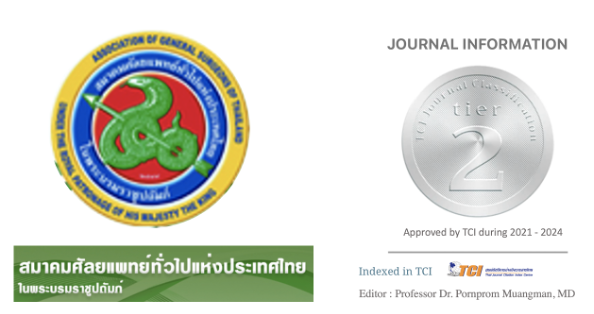Maturation Rate of Brachiocephalic VS Brachioantecubital Arteriovenous Fistula; A Prospective Cohort Study
Keywords:
Arteriovenous fistula, Hemodialysis, Brachiocephalic AVF, Brachioantecubital AVFAbstract
Background: Brachiocephalic arteriovenous fistula (BC-AVF) remains the standard procedure for arteriovenous fistula (AVF) creation in hemodialysis patients. Brachioantecubital arteriovenous fistula (BA-AVF) carried a benefit of dual venous outflow and use as an alternative choice for AVF creation. However, the maturation rate of BA-AVF is still questionable.
Objective: To compare the maturation rate of BC-AVF and BA-AVF and evaluate the risk factors for delay maturation.
Material and Methods: Sixty-nine chronic kidney disease (CKD) at least stage IV patients were enrolled in this prospective cohort study. After preoperative duplex ultrasonography mapping, patients with cephalic vein patent and diameter greater than 2.5 mm were selected into BC-AVF group. Patients with cephalic, basilic and antecubital veins patent and diameter greater than 2.5 mm were selected into BA-AVF group. All procedures were performed under local anesthesia. The primary outcome is the maturation rate of fistula at 6 weeks, 3 months and 6 months. The secondary outcome was risk factors for delayed maturation.
Results: Sixty-nine patients were enrolled, 38 patients underwent BC-AVF, and 31 patients underwent BA-AVF. There was no statistical difference in maturation rate between BC-AVF and BA-AVF at 6 weeks (65.79.32% vs 54.84%; P=0.218), 3 months (7.89% vs 19.35%; P=0.345) and 6 months (5.26% vs 6.45%; P=0.877). Univariate analysis revealed that preoperative cephalic vein less than 3 mm increased the risk of delay maturation (P=0.001). Age, gender, diabetes mellitus, hypertension, dyslipidemia, coronary artery disease and a history of hemodialysis catheter did not associate with delayed AVF maturation rate.
Conclusions: Our study supports the use of BA-AVF creation in patients with favorable venous anatomical configuration have the comparable maturation rate to BC-AVF and also provide the benefits from dual venous outflow to cephalic and basilic veins for the future hemodialysis cannulation.




